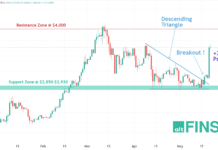Much like e-numbers in our food, the technical details surrounding Ethereum’s ERC token standards remain a mystery to the average crypto enthusiast.
But long-term holders should take note because the token standards are key to how smart contracts function, and ultimately determine the long-term scalability of the entire network.
As it stands, the current ERC-20 and ERC-721 tokens on Ethereum both serve specific and essential functions. But now both are in danger of a stark upgrade with the arrival of ERC-1155.
First, let’s take a look at the purpose of the existing tokens, and the niggling problems they present.
ERC-20
These are the ‘vanilla’ tokens of the Ethereum network, made to be uniform, identical, or more precisely – fungible.
A currency is fungible if each of its units is of the same value. So a $10 note will always be worth the same as any other $10 note. No amount of personalization can alter its value.
This is why ERC-20 tokens are used as currency on the Ethereum network – they can be mass produced and distributed with the assurance that each of them will remain the same as any other.
Fungibility is an essential feature of a good currency but comes with certain downsides. Since all coins are the same, none can be personalized or ever be truly ‘owned’ by an individual.
This becomes a problem if you wanted to create a cute-cat trading game, for example. Which leads us on to…
ERC-721
ERC-721 was created to offer a non-fungible alternative to ERC-20, meaning that each token is unique, and can hold a radically different value from any other.
The utility of this token became apparent with the launch of Cryptokitties, where users have unique, personally identifiable collectible cats, each with a different history and value.
ERC-721 has since been adopted as the standard token for deploying digital art or unique collectibles on the blockchain and underpins the recent boom of blockchain-based gaming apps.
The weakness of ERC-721 was evidenced during the Ethereum network slowdown when the Cryptokitties game achieved peak use. In an in-game environment where every item is represented by a unique token, a similarly distinctive transaction must take place for every interaction that occurs.
The code for what would become ERC-721 was suggested by Enjin Coin (ENJ) creator Witek Radomski in 2017, and soon became integrated into the Ethereum network. Now Radomski has come up with the code that might address the problems presented by ERC-721, and it could be the thing that solves Ethereum’s scalability issues.
ERC-1155
The highlight feature of ERC-1155 tokens is that they can contain multiple transactions within one, so to speak, all while retaining their uniqueness and individuality.
As Radomski’s Github post states:
“Tokens’ standards like ERC-20 and ERC-721 require a separate contract to be deployed for each fungible or NFT token/collection. This places a lot of redundant bytecode on the Ethereum blockchain and limits certain functionality by the nature of separating each token contract into its own permissioned address.”
Using the game example, instead of sending a new transaction to the blockchain every time an interaction occurs between players, an infinite number of transactions can be stored inside one ERC-1155 token, which is then logged on the blockchain as a single transaction.
Radomski’s Github post continues:
“With the rise of crypto games and platforms like Enjin Coin, game developers may be creating tens of thousands of items, and a new type of token standard is needed to support this.”
Radomski made sure to mention his own platform, but the sentiment applies across the board. Right now, ERC-1155 looks like it could be the token which houses the tens of thousands of items that the growth of blockchain gaming will bring.















